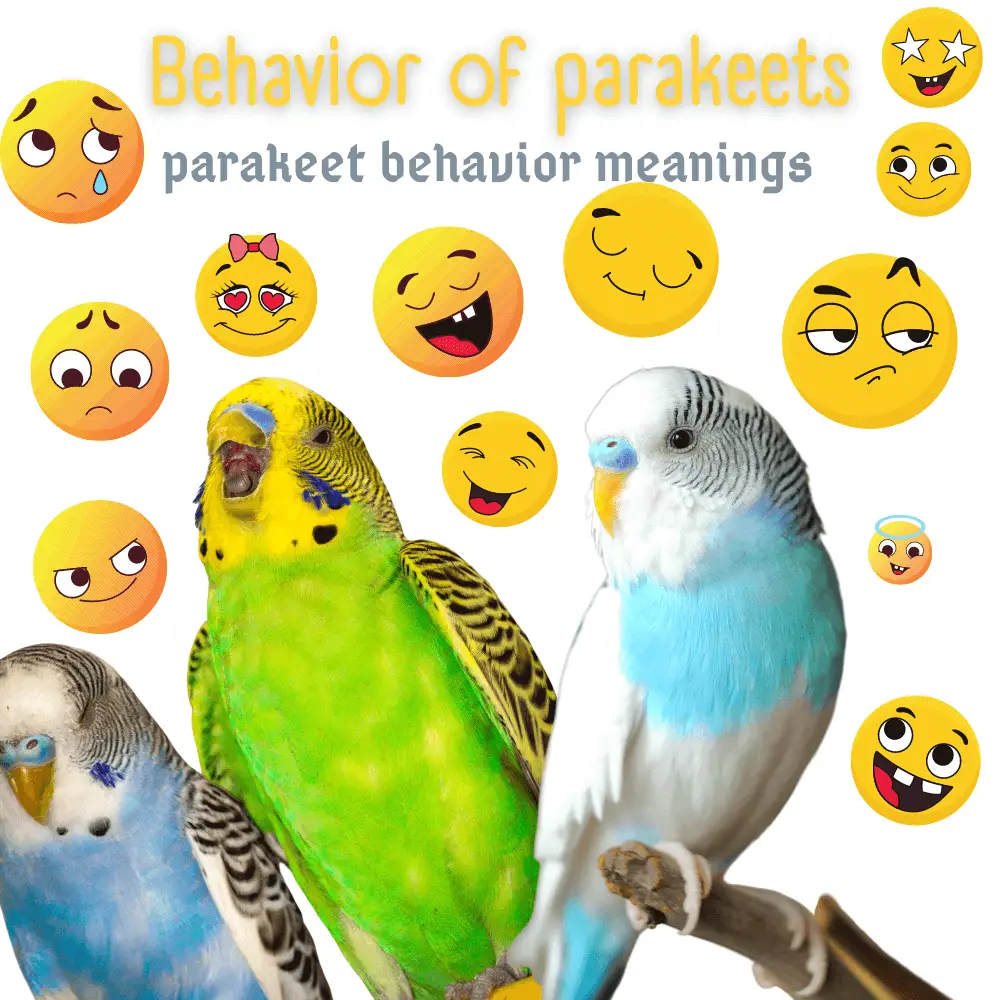Behavior of parakeets: Parakeets have the particularity of having many means of communication with other birds and humans. But some of these communication tactics or devices can be confusing. In this article, I’ll walk you through the ins and outs of parakeet language and how to tell what they’re trying to tell you.
Behaviors of parakeets:
- Talking, tweeting, singing, and miming = being happy.
- Scream = Fear or pain
- Regurgitating food = Affection
- To bite = to be threatened, to be afraid
- Plucking feathers = boredom, skin problem, or allergy
- Flapping = attention seeking
- Trembling = Fear
- Headbutting = mating, socializing, or hunger
Parakeets are fairly easy to read, but it’s still crucial to learn their language as best you can. It’s also important to remember that every bird is different, so it’s important to spend time with your parrots and pay attention to them, and know what’s normal for them, and what’s not.
The best way to do this is to find out what they are trying to say when they do certain things.
Parakeet happy
In general, parakeets are very happy and contented birds. You will often find them singing a song or talking. They do this when they are happy or when they feel good. This of course varies between parakeets. Some are very rambunctious and others are shy.
But noises aren’t the only things parakeets do to show they’re satisfied! Sometimes they flap their wings enthusiastically, which shows that they are healthy and content.
They also often do this after a long rest. When they wake up, they have to let go of their night, get their blood flowing, and prepare their wing muscles to take flight.
If your parakeet is extremely enthusiastic or happy, it may flick its tongue
They also often tremble when they are happy! They don’t shake their whole body. It’s a sign of something completely different. But if they wag their tail slightly, that’s a good sign that they’re happy.
They often do this when you come home after a day away. This behavior is very similar to dogs wagging their tails when we come home at the end of the day.
They may also, if they are extremely enthusiastic or happy, wave their tongues. They open their mouths slightly and wave their tongues back and forth. This movement, together with that of the tail, will make you think of a really happy or satisfied dog.
What to do :
Take advantage of their contentment! Find what makes them happy and try to expand and multiply those experiences or toys. Your bird likes a certain food, don’t forget to give it that food next time. Does he particularly like a certain type of toy? Try to get several variations of this toy for your feathered friend to play with!
Affection/Attachment
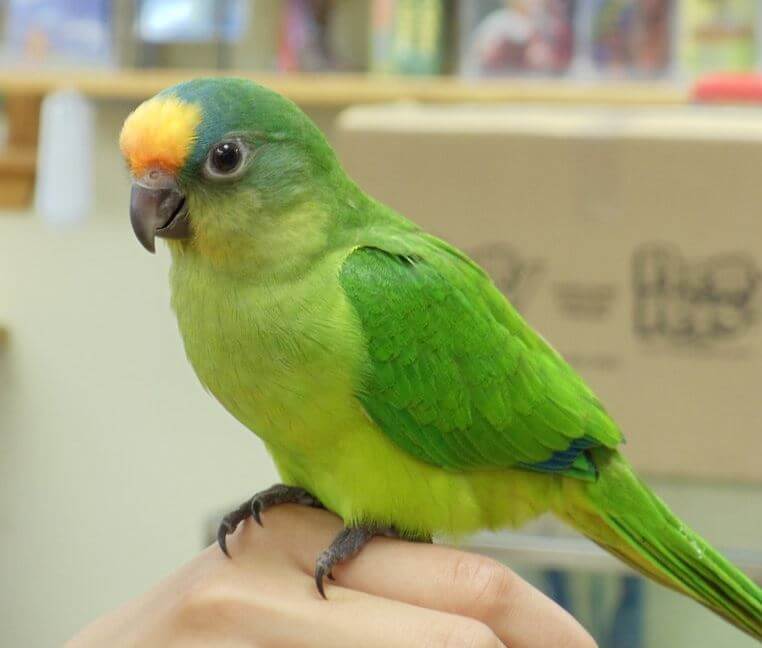
Parakeets are extremely social animals and have a lot of love to give. If you give them the opportunity, they will quickly become an excellent companion who will be both affectionate and attached to you.
If your bird is affectionate towards you, he won’t be afraid to show it. It will tweet for you, talk to you, and even sing with you! He will shake his head and do whatever it takes to try to communicate with you.
Another great sign that they are affectionate towards you is if, when you can handle them, they sit on your shoulder and begin to peck your ear or hair lightly.
Parakeets also have a strong tendency to become attached to objects. It is often an attachment to whatever they can find. Often, if a bird does not have a natural companion, it becomes attached to other things. A type can be made to certain toys.
This phenomenon is common with bells, as they move and emit sounds that can mimic the high-pitched chirping of a bird. If you notice this kind of obsessive attachment, it’s time to think about finding a companion for your parakeet.
The most common sign of affection or attachment in parakeets is the regurgitation of their food into the mouth of their companion.
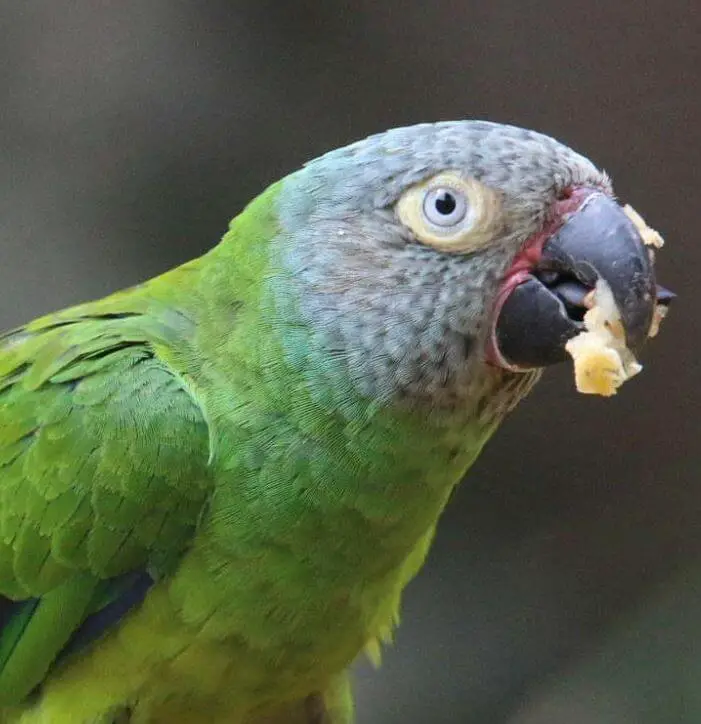
They can also become attached to you, or even to their own reflection. If a mirror is in their cage, they will often become attached to the mirror because it looks like another bird. It is not uncommon for a parakeet to become attached to its owner, because he is the one who takes care of it and socializes it.
As bizarre as it may seem to us, the most common sign of affection or attachment in parakeets is regurgitating their food into the mouth of their companion.
When it comes to toys, mirrors, or even their owners, they often try to regurgitate their food toward us, because that’s how they know to show their love.
What to do :
Don’t be afraid to show affection back to your parakeet. You can do this in several ways. For example, you can nod your head to them, sing with them or even pet them!
It will however be necessary to caress them in their conditions because some will not appreciate it. But, to try, stroke them lightly on the head. If they like it, they will relax and ruffle their feathers.
Be careful though, do not be too affectionate until you have taught your parakeet that she can trust you, but train her with your fingers.
Trying to communicate with other parakeets
Parakeets often communicate with the same tactics and means as their owners, which we will discuss later. But, briefly, parakeets tend to communicate vocally, just as much as physically.
Some communication tactics have a different meaning from other birds and humans.
Nodding is used in the mating process, male parakeets often nod while chirping happily for female parakeets. This usually leads to mutual feeding and then mating.
Nodding is a means of socialization for a parakeet.
Don’t be alarmed if you see your parakeet moving its head toward you. She’s not trying to mate with you! That’s not the only use of nodding.
With other parakeets of the same family or sex or with humans, nodding is a way of socialization for a parakeet. Extroverted parakeets are more likely to use this social sign outside of mating, while more shy parakeets are more likely to use it strictly for mating.
Baby parakeets have yet another use for this nod. This is how they communicate to their mother (or other caregivers) that they are hungry! When they squeal, it means they are hungry.
Nodding – used in the mating process, but can be a way of simply saying hello, outgoing birds will do this more than calm birds Note: baby parakeets often nod their heads to indicate they are hungry.
Try to communicate with the owners
If you show your appreciation or interest when your parakeet nods, it will begin to use it to communicate with you. It especially encourages him if you reciprocate to get his attention.
When parakeets nod to their owner, it’s often just to say hello. But, if they’re accompanied by a louder chirp, it could mean they’re trying to get your attention for some reason.
It can be simply because they want your affection, or because they are in need. Pay attention to other signs in their body language that indicate they are in distress.
Another way parakeets get their owner’s attention is to flap their wings. If they’ve been dormant for a long time and are hovering above their perch flapping their wings heavily, that’s usually a sign they’re stretching and warming up rather than trying to get your attention.
Parakeets may flap their wings to attract their owner’s attention.

The communication they use with most people in their lives is chirping, chirping, and singing. These are the natural sounds they use in their daily lives. They most often signify contentment or happiness, but much depends on the tone of the tweet.
In addition to these things, parakeets can be taught to talk and whistle! This is actually one of the most talkative parrot breeds. Teaching them certain words or phrases can be very helpful in improving communication and trust with your parakeet.
It is strongly advised to teach your parakeet to talk before teaching him to whistle. Indeed, whistling is often easier and more fun for parakeets. After learning to whistle, they probably won’t have the motivation to learn to talk or say specific words.
What to do :
Communicate back! Your bird will appreciate all the attention you give it, but the better the interaction, the stronger the bond! Observe your bird, talk to it, sing to it, and show interest when it tries to communicate with you. Use their communication skills and tactics to communicate with them.
Boredom/Obsession
Unfortunately, parakeets tend to get bored with things very quickly. That’s why you have to pay attention to some things. On the other hand, if they can be bored with something in their cage, if they feel lonely, they can become obsessively attached to certain toys or other unnatural things.
When bored, a parakeet may become quiet, agitated or even depressed. These are all very bad things that can lead to even worse things if left unaddressed. When a parakeet is inactive, exhausted or sad, it is not taking care of its body properly.
If your parakeet is pulling out its feathers, it may be bored.
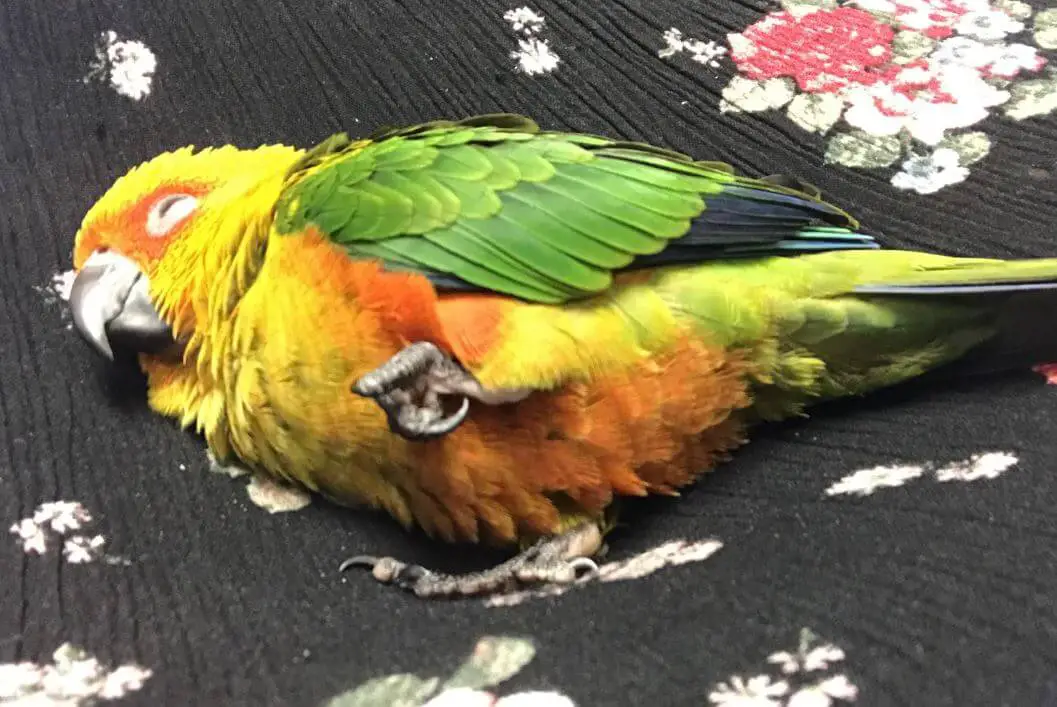
Another behavior that betrays your parakeets’ boredom is when they pluck their feathers. Although it could also be a sign of illness, allergy or ailment, whatever the cause, it is an unhealthy behavior that needs to be addressed.
As has been said recently, the opposite side of boredom is naturally obsession. This can often happen if a bird lives alone and does not have a strong bond with its owner. This often happens when an unnatural attachment goes too far.
Whether it’s a toy or an object in their cage or a mirror, something will make them feel like there’s another living thing. And they can become obsessed with what they think is a new friend. Like I said, parakeets are very social and need that socialization just like humans.
What to do :
Budgies are very curious and will examine anything you put in their cage, but after they’ve fully examined it and played with it for a few days, they’ll get tired of it. It’s crucial to rotate the toys in the cage every few days to keep your parakeet from becoming bored or obsessed.
Also, be sure to pay attention to the needs of your parakeets. If they need another bird friend, try to make it happen. Also, be sure to spend lots of quality time with them.
Anxiety/fear
Anxiety and fear are other emotions that you will need to monitor closely in your parakeet. The behaviors that indicate these emotions are very similar to those we see in our homes, so it’s not hard to tell when your parakeet is scared.
Although they are incredibly loud most of the time, yelling is not normal for a parakeet. A slight squeak may be emitted from time to time if she gets overly excited, but again, it’s the tone of your parakeet’s vocal behaviors that give it away.
If your parakeet is making a real cry, there is cause for concern.
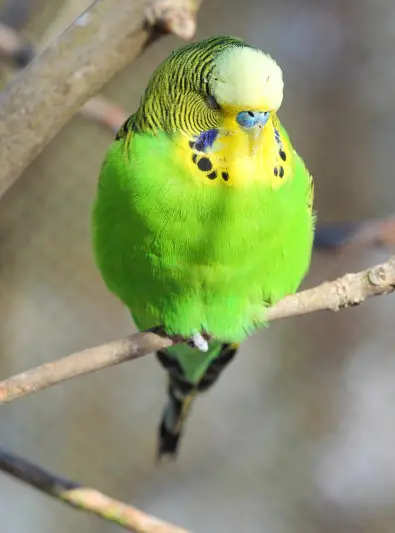
A parakeet’s body language when it is frightened includes several elements. Most often, when they are afraid, they tremble. Their whole body and their wings tremble. It’s almost never a good sign.
This means either they are scared or they are cold, which can indicate illness. Whenever there are tremors, find the source and put an end to it.
Another telltale sign of a budgie’s fear is when it curls up and tries to make itself as small as possible.
Like humans, if frightened, a parakeet can become aggressive. She may try to bite her or bite her. Be aware of this and try to eliminate the elements that stress your parakeet before intervening. You could put yourself in danger.
What to do :
The best you can do in this situation is to try to find the source or cause that scared him and eliminate it. Sometimes it’s a fleeting outside source and there’s not much you can do but try to distract your bird by singing or communicating.
If your bird is out of its cage, try to calmly help it back into its cage, as this is its safe place.
Remember to watch for signs of aggression from your parakeet to make sure no one gets hurt.
Protective/Threatened/Frustrated
When it comes to aggressive or irritating emotions, it is important to realize them as soon as possible and try to let them calm down or reduce the tension. How do you know he is feeling these emotions?
Purring is a behavior that can signal annoyance. In cats it is a sign of contentment, but in parakeets it is a sign of frustration. If the purring is due to something you’ve done, it’s a good idea to give it some space.
If another source is causing the inconvenience, try to eliminate that source as soon as possible. But it can also be a sign of relaxation, so be sure to notice other verbal and physical behaviors to determine what emotion your parakeet is feeling.
In parakeets, purring is a behavior that can signal annoyance.
Other behaviors that may mean your parakeet is feeling threatened or frustrated are very similar to those of other animals. They are known to bite when provoked.
Usually you can tell when they are going to bite. They stare at their target, watch carefully as their beak opens, and that should give them plenty of time to back out of the situation.
Sometimes they even emit a deep growl or a long hiss!
What to do :
At this point, leave your bird alone and give it time to calm down. You don’t want to risk agitating your bird any further. Giving him some alone time will help him calm down and keep everyone safe.
Illness/pain
It’s very important to pay attention to signs that your parakeet might be in pain or getting sick. If these signs are ignored, your parakeet may become very sick or even die.
When a parakeet is sick, in pain, or has an illness, it may begin to pluck its feathers. Whatever the cause, it’s not a good sign. But it can also be due to boredom. When analyzing if your parakeet is sick, be sure to look for several of these behaviors.
Other behaviors to watch out for are if your bird is particularly lethargic and somehow stays in one spot in the cage. Parakeets are generally very active animals, so any changes in their energy are worth noting.
He may also lose his appetite and start eating much less or not eating at all! This is an important behavior to watch out for. Parakeets need energy and nutrients. If they stop eating and don’t start eating again quickly enough, it’s essential to take them to the vet.
Sick parakeets can lose their appetite and start to eat much less or not eat at all!
Depending on the bird or the disease, it may be more irritable than usual. This is where getting to know your bird and interacting with it is important. In this way, you will be able to detect the slightest changes in attitude, and their degree of intensity.
They are also likely to puff out their beaks and ruffle their feathers to appear larger than they actually are. This helps them increase their body heat.
Health Note: Most illnesses in parakeets are due to them being too cold. As they are tropical birds, they must stay at a temperature of 70 degrees to stay healthy.
What to do :
If your parakeet does several of these things most or all of the time, take him to a vet (preferably one who specializes in birds) immediately. She can suffer from a number of very serious illnesses, including respiratory infections. These diseases can lead to death.
Do parakeets recognize their owner?
Birds can recognize their owner’s face and voice. To encourage this, spend lots of time with them, and talk to them often.
Do parakeets become attached to their owner?
Parakeets, just like other birds, are highly emotional and thrive on the bonds they make. Often birds make these emotional connections with a human rather than other birds, especially if the bird is raised away from its flock.
What are the signs of a parakeet dying?
Difficulty breathing, breathing with the beak open, wagging the tail when breathing, discharge around the nostrils, sneezing and/or hissing or clicking. If these symptoms occur, take your parakeet to the vet immediately.
Related article:

